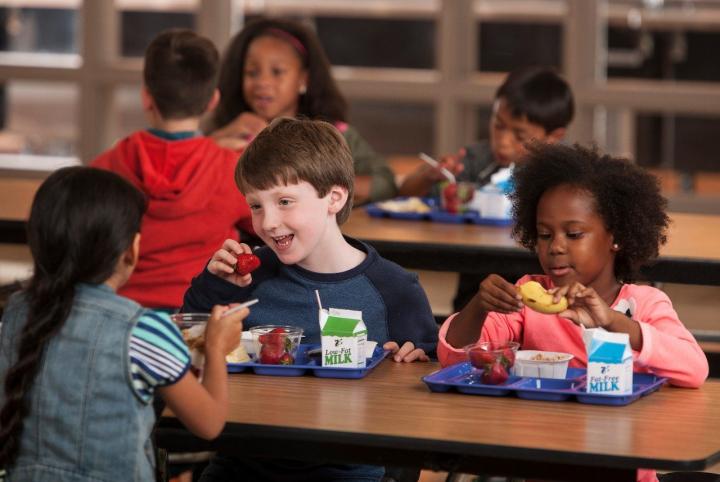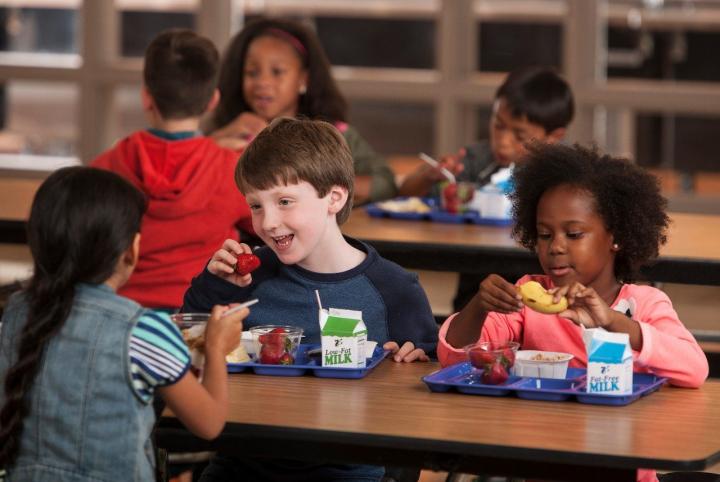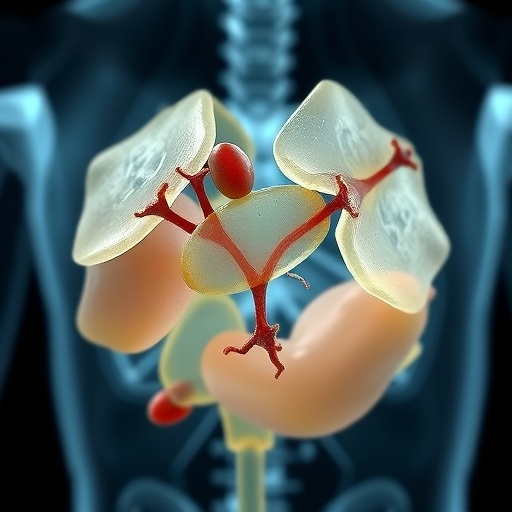
Credit: Photo courtesy of USDA.
Primary school students are more likely to eat a nutritional breakfast when given 10 extra minutes to do so, according to a new study by researchers at Virginia Tech and Georgia Southern University.
The study, which is the first of its kind to analyze school breakfast programs, evaluated how students change their breakfast consumption when given extra time to eat in a school cafeteria. The study also compared results of these cafeteria breakfasts to results of serving in-classroom breakfasts to the same group of students.
"It's by far the most sophisticated, accurate measurement of school breakfast intake ever done," said Klaus Moeltner, a professor of agricultural and applied economics in the Virginia Tech College of Agriculture and Life Sciences. "We know exactly how much the students consumed and how much time they had to consume it."
Using food weighting stations developed by co-author Karen Spears of Georgia Southern University, the researchers collected information on the number of students who ate a school breakfast, how much they ate, and their exact nutritional intake.
The findings, recently published in the American Journal of Agricultural Economics, revealed that the number of school breakfasts consumed increased by 20 percent when students were given 10 extra minutes to eat in the cafeteria, and an additional 35-45 percent when breakfasts were served inside classrooms, bringing the overall rate of breakfast consumption close to 100 percent.
"The percent of students that go without breakfast because they didn't eat at home and they didn't have time to eat at school goes from 4 to 0 percent when given 10 minutes more to eat, so the most vulnerable segment is taken care of," said Moeltner.
And while the results suggest that more students eat breakfast when it is served inside classrooms, the researchers acknowledge the extra costs associated with in-classroom breakfasts.
"When you move breakfast into the classroom, you have to serve all the students for free, and the associated costs needed to feed all the students must be covered by low income subsidies," said Moeltner. "But many schools don't have a large enough proportion of subsidized students and therefore cannot afford to serve in-classroom breakfasts because they lack the subsidies to offset the costs."
Thus, the findings have significant implications for schools that cannot afford classroom breakfasts, but could allow more time for cafeteria breakfasts.
The study also provided additional insights into student breakfast consumption habits.
Third- and fourth-grade students from the three Reno-area schools that participated in the study were given wristbands as they arrived on campus that tracked their arrival time as well as individual consumption and nutrition data. In addition, students completed a daily questionnaire to gain further insight into whether they ate breakfast at home, how hungry they were upon arrival at school, which transportation method they used to get to school, and whether they liked any of the food offered.
Analysis of the data showed that the transportation method used to get to school did not impact whether or not students ate breakfast, and that students did not overeat because of the extra time provided.
"Our results show that there's no change in average consumption, which is reassuring," said Moeltner. "Kids aren't overeating because of the extra time. Instead, they're substituting – if they used to eat breakfast at home, now they eat it at school."
The researchers are now analyzing the breakfast waste data collected during the study with hopes of publishing further research on the topic.
With the rich data provided by the study, researchers can examine many school breakfast questions. For now, the results on breakfast consumption when given extra time are clear, and researchers advise educational institutions and policymakers to consider implementing additional time for school breakfasts.
###
Media Contact
Michael Stowe
[email protected]
540-231-2611
@vtnews
http://www.vtnews.vt.edu
Original Source
https://vtnews.vt.edu/articles/2018/08/cals-breakfast-time-study.html http://dx.doi.org/10.1093/ajae/aay048





